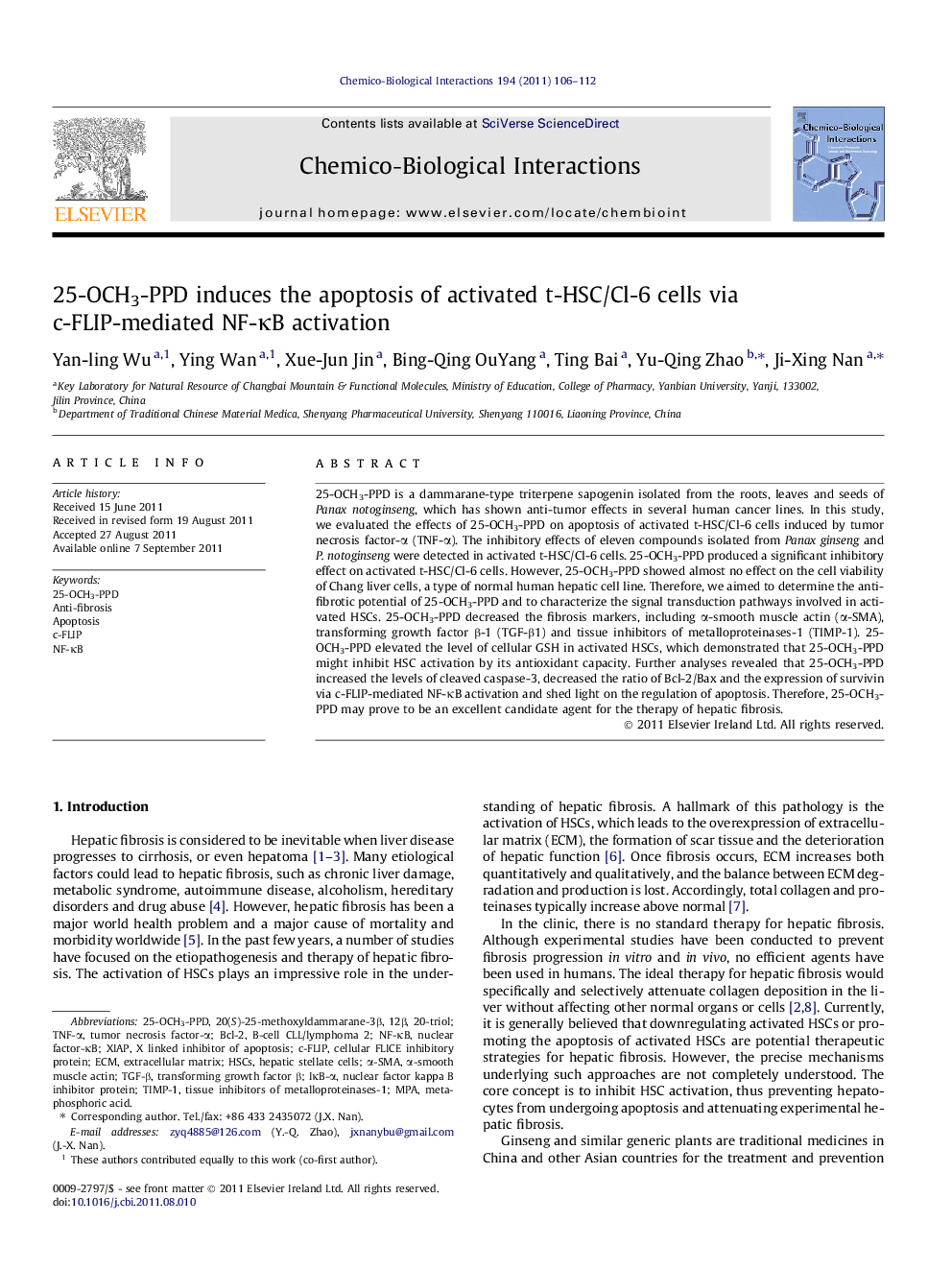| Article ID | Journal | Published Year | Pages | File Type |
|---|---|---|---|---|
| 2580875 | Chemico-Biological Interactions | 2011 | 7 Pages |
25-OCH3-PPD is a dammarane-type triterpene sapogenin isolated from the roots, leaves and seeds of Panax notoginseng, which has shown anti-tumor effects in several human cancer lines. In this study, we evaluated the effects of 25-OCH3-PPD on apoptosis of activated t-HSC/Cl-6 cells induced by tumor necrosis factor-α (TNF-α). The inhibitory effects of eleven compounds isolated from Panax ginseng and P. notoginseng were detected in activated t-HSC/Cl-6 cells. 25-OCH3-PPD produced a significant inhibitory effect on activated t-HSC/Cl-6 cells. However, 25-OCH3-PPD showed almost no effect on the cell viability of Chang liver cells, a type of normal human hepatic cell line. Therefore, we aimed to determine the anti-fibrotic potential of 25-OCH3-PPD and to characterize the signal transduction pathways involved in activated HSCs. 25-OCH3-PPD decreased the fibrosis markers, including α-smooth muscle actin (α-SMA), transforming growth factor β-1 (TGF-β1) and tissue inhibitors of metalloproteinases-1 (TIMP-1). 25-OCH3-PPD elevated the level of cellular GSH in activated HSCs, which demonstrated that 25-OCH3-PPD might inhibit HSC activation by its antioxidant capacity. Further analyses revealed that 25-OCH3-PPD increased the levels of cleaved caspase-3, decreased the ratio of Bcl-2/Bax and the expression of survivin via c-FLIP-mediated NF-κB activation and shed light on the regulation of apoptosis. Therefore, 25-OCH3-PPD may prove to be an excellent candidate agent for the therapy of hepatic fibrosis.
Graphical abstractFigure optionsDownload full-size imageDownload as PowerPoint slideHighlights► 25-OCH3-PPD inhibited HSC activation by inducing apoptosis. ► 25-OCH3-PPD also elevated the level of cellular GSH. ► The apoptosis of activated HSCs might perform via NF-κB and c-FILPs signaling.
